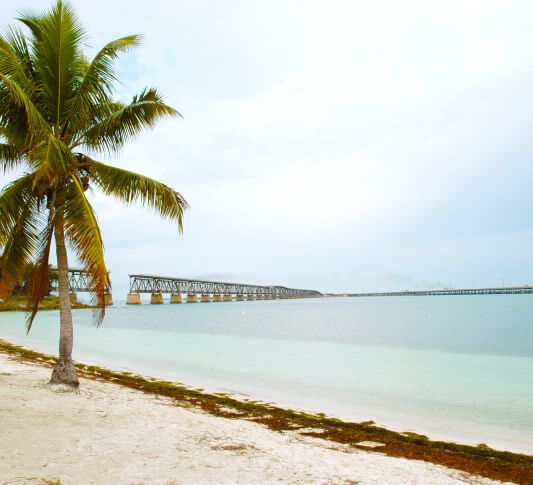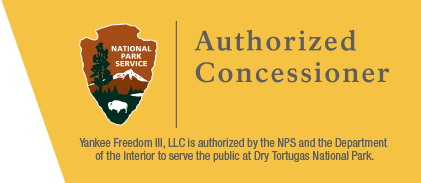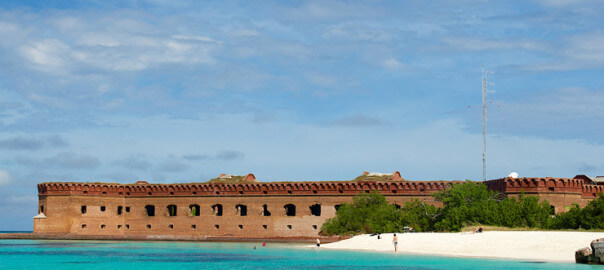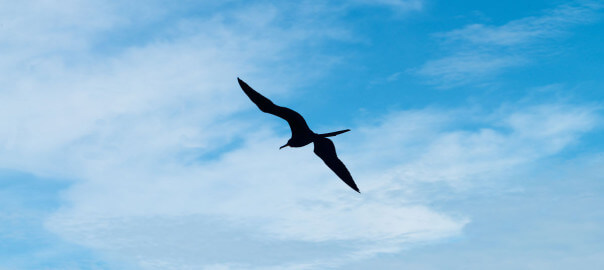Florida State Parks

Blue Spring State Park
The largest spring on the St. Johns River, Blue Spring is a designated Manatee Refuge and the winter home (mid-November through March) to a growing population of West Indian Manatees. For centuries, the spring area was home for Native Americans. In 1766 it was visited by British botanist John Bartram, but it wasn´t until 1856 that it was settled by Louis Thursby and his family. The Thursby house, built in 1872, remains standing. The spring´s crystal clear, 73 degree water can be enjoyed by swimmers, snorkelers, and certified scuba divers with a partner. Swimming or diving with manatees is not permitted and is strictly enforced. The river is popular for fishing, canoeing, and boating. River boat tours are available; for reservations, call St. Johns River Cruises at (386) 917-0724. The park has plenty of picnic areas and a hiking trail. For overnight stays, air-conditioned cabins, a full-facility campground, and primitive campsites are available. Located west of Orange City. Take U.S. 17/92 to Orange City, go west two miles on French Avenue to the entrance.
Bulow Creek State Park
This park protects one of the largest remaining stands of southern live oak forest along Florida’s east coast. The reigning tree is the Fairchild Oak, one of the largest live oak trees in the south. For more than 400 years it has been a silent witness to human activities along Bulow Creek, including the destruction of the neighboring Bulow Plantation during the Second Seminole War in 1836. Several trails allow hikers to explore the interior of the park, where visitors can see white-tailed deer, barred owls, and raccoons. The Bulow Woods Trail, nearly seven miles long, takes hikers to Bulow Plantation Ruins Historic State Park. Visitors can picnic in a shady pavilion or at a table on the lawn within view of the Fairchild Oak. Located five miles north of Ormond Beach on Old Dixie Highway (County Road 4011). For Information about Bulow Creek State Park, please call 386-676-4050.
Bulow Plantation Ruins Historic State Park
In 1836, the Second Seminole War swept away the prosperous Bulow Plantation where the Bulow family grew sugar cane, cotton, rice, and indigo. Ruins of the former plantation-a sugar mill, a unique spring house, several wells, and the crumbling foundations of the plantation house and slave cabins-show how volatile the Florida frontier was in the early 19th century. Today, a scenic walking trail leads visitors to the sugar mill ruins, listed on the National Register of Historic Sites. The park has picnic facilities and an interpretive center that tells the plantation’s history. A boat ramp provides access for canoes and small powerboats to scenic Bulow Creek, a designated state canoe trail. Anglers can fish from the dock or a boat. The park is open 9:00 a.m.-5:00 p.m. daily. Located three miles west of Flagler Beach off County Road 2001(Old King’s Road), between State Road 100 and Old Dixie Highway. For Information about Bulow Plantation Ruins Historic State Park, please call 386-517-2084. If you get the voicemail and immediate assistance is required please call Tomoka State Park at 386-676-4050.
Colt Creek State Park
Purchased from the Overstreet Family in May of 2006, this 5067 acre park nestled amongst the Green Swamp Wilderness Area and named after one its tributaries is one of the newest state park acquisitions. Comprised mainly of pine forests, cypress domes and open pasture land, this piece of pristine wilderness is home to many animal species including the American Bald Eagle, Sherman’s Fox Squirrel, Gopher Tortoise, White-Tail Deer and Wild Turkey. The park has limited access while the Unit Management Plan is being developed for the area. Limited use during this time includes an improved gravel access road off of State Road 471, parking area, restroom, informational kiosk, and covered pavilion with picnic tables and grill. A limited trail system for hiking and horseback riding will allow visitors to begin exploration of this natural wonderland. Please be aware that some areas are marked as closed due to a cattle operation which will continue until June 1, 2007. For Information about Colt Creek State Park, please call.
De Leon Springs State Park
Native Americans visited and used these springs as long as 6,000 years ago. In the early 1800s, settlers built sugar and cotton plantations that were sacked by Seminole Indians during the Second Seminole War. By the 1880s the springs had become a winter resort, and tourists were promised “a fountain of youth impregnated with a deliciously healthy combination of soda and sulphur.” The swimming area is adjacent to a beautiful, shady picnic ground. Canoe, kayak and paddleboat rentals are available for a paddling tour of the spring and spring run. De Leon Springs flows into the Lake Woodruff National Wildlife Refuge where canoeists and kayakers can explore 18,000 acres of lakes, creeks, and marshes. At The Old Spanish Sugar Mill Restaurant, guests can make their own pancakes at the table. Located at the corner of Ponce de Leon and Burt Parks Road, west of U.S. 17. For Information about De Leon Springs State Park, please call 386-985-4212.
Dunns Creek
Located south of a sharp bend in the St. Johns River, this is one of the newest additions to the state park system. The park’s natural communities include sandhills, covered with longleaf pines and wiregrass, and sand pine scrub. These communities protect several endangered and threatened species, such as the gopher tortoise, as well as a variety of other native animals. A picnic and hiking area is located on U.S. 17, north of Pomona Park. The mile-and-a-half hiking and bicycling trail takes visitors to the pristine waters of Blue Pond. Located 13 miles south of Palatka on U.S. 17 between Pomona Park and Satsuma. For Information about Dunns Creek, please call 386-329-3721.
Faver-Dykes State Park
Noted for its pristine condition, this tranquil park borders Pellicer Creek as it winds along Florida’s east coast highways down to the Matanzas River. Pellicer Creek is a popular site for birding with more than one hundred bird species seen during spring and fall migrations. Songbirds, including the colorful wood warblers, along with eagles and falcons, return to nest at the park each year. Wading birds, such as egrets, wood storks, white ibis, and herons, feed in the tidal marshes and creeks. This peaceful park is also home to deer, turkeys, hawks, bobcats, and river otters. Fishing, picnicking, and nature walks are popular activities. Pellicer Creek is a designated state canoe trail and visitors can rent canoes at the park. A full-facility campground is available for overnight stays. Located 15 miles south of St. Augustine near the intersection of
I-95 and U.S. 1. For Information about Faver-Dykes State Park, please call 904-794-0997.
Fort Mose
The power politics of 18th century England and Spain reached across the Atlantic to the Florida frontier. In 1738, the Spanish governor of Florida chartered Fort Mose as a settlement for freed Africans who had fled slavery in the British Carolinas. When Spain ceded Florida to Britain in 1763, the inhabitants of Fort Mose migrated to Cuba. Although nothing remains of the fort, the site was listed on the National Register of Historic Places in 1994 for its importance in American history. Visitors may view the site from a boardwalk and stop for a picnic in a covered pavilion. Located approximately two miles north of the Castillo de San Marcos near the St. Augustine City gates on U.S. 1. Turn east off U.S. 1 onto Saratoga Boulevard and follow the signs to the site. For Information about Fort Mose, please call (904) 461-2033.
Gamble Rogers Memorial State Recreation Area at Flagler Beach
Nestled between the Atlantic Ocean and the Intracoastal Waterway, this windswept park is named for Florida folk singer Gamble Rogers and railroad entrepreneur Henry Flagler. The beach is the most popular feature at this park, where visitors enjoy swimming, sunbathing, or beachcombing. The daily low tide is an ideal time to observe shore birds feeding in tidal ponds; summer months bring sea turtles who lay their eggs in the golden-brown sand. On the Intracoastal Waterway side of the park, picnic pavilions provide a shady place to enjoy a meal. A nature trail winds through a shady coastal forest of scrub oaks and saw palmetto. Boaters and canoeists can launch from a boat ramp on the Intracoastal Waterway. The park’s full-facility campground overlooks the Atlantic Ocean and is just a short walk along a boardwalk from the beach. Located in Flagler Beach off Highway A1A. For Information about Gamble Rogers Memorial State Recreation Area at Flagler Beach, please call 386-517-2086.
Hontoon Island State Park
This island, located in the St. Johns River in Volusia County, welcomes visitors to enjoy nature and history in quiet solitude. The island is accessible only by private boat or park ferry. Evidence of Native American habitation over thousands of years can be witnessed as visitors hike through the park. Stop in and walk through the impressive visitor center to learn more about the many inhabitants and uses of Hontoon Island over the years. Boating, canoeing, and fishing are popular activities and canoe rentals are available. Picnic areas include tables, grills, and a playground. For overnight stays, the park has rustic cabins�an enclosed sleeping space with electricity�no heat, air conditioning, bathrooms, or kitchens. Overnight boat slip rentals and a tents�only campground are also available. The park´s ferry operates daily from 8:00 a.m. to one hour before sunset. Located six miles west of Deland off State Road 44. For Information about Hontoon Island State Park, please call 386-736-5309.
Pages: 1 2 3 4 5 6 7 8 9 10 11 12 13 14 15 16



